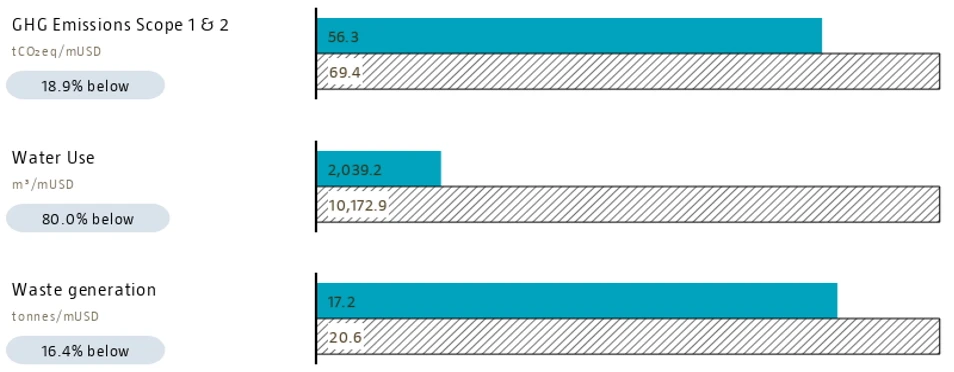Disclaimer
Please read this important information before proceeding further. It contains legal and regulatory notices relevant to the information contained on this website.
The information contained in the Website is NOT FOR RETAIL CLIENTS – The information contained in the Website is solely intended for professional investors, defined as investors which (1) qualify as professional clients within the meaning of the Markets in Financial Instruments Directive (MiFID), (2) have requested to be treated as professional clients within the meaning of the MiFID or (3) are authorised to receive such information under any other applicable laws. The value of the investments may fluctuate. Past performance is no guarantee of future results. Investors may not get back the amount originally invested. Neither Robeco Institutional Asset Management B.V. nor any of its affiliates guarantees the performance or the future returns of any investments. If the currency in which the past performance is displayed differs from the currency of the country in which you reside, then you should be aware that due to exchange rate fluctuations the performance shown may increase or decrease if converted into your local currency.
Robeco Institutional Asset Management UK Limited (“RIAM UK”) markets the Funds of Robeco Institutional Asset Management B.V. (“ROBECO”) to institutional clients and professional investors only. Private investors seeking information about the Robeco Funds should consult with an Independent Financial Adviser. ROBECO will not be liable for any damages or losses suffered by private investors accessing the website.
RIAM UK is an authorised distributor for ROBECO Funds in the UK and has marketing approval for the funds listed on the website, all of which are UCITS Funds. ROBECO is authorised by the AFM and subject to limited regulation by the Financial Conduct Authority.
Many of the protections provided by the United Kingdom regulatory framework may not apply to investments in ROBECO Funds, including access to the Financial Services Compensation Scheme and the Financial Ombudsman Service. No representation, warranty or undertaking is given as to the accuracy or completeness of the information on this website.
If you are not an institutional client or professional investor, you should therefore not proceed. By proceeding, please note that we will be treating you as a professional client for regulatory purposes and you agree to be bound by our terms and conditions.
If you do not accept these terms and conditions, as well as the terms of use of the website, please do not continue to use or access any pages on this website.
Sustainable Investing
Environmental Footprint Reporting
Environmental Footprint Reporting is part of Robeco’s sustainability reporting tool, ESGenius. The tool quantifies the environmental footprint of portfolio companies using data on their greenhouse gas emissions, water use and waste generation and helps investors measure the environmental footprint of their portfolios.
Footprint reports can be generated for Robeco’s entire range of products. Though reports are backward looking, when used in combination with other ESG research and other forward-looking data, they contribute to a company’s overall sustainability profile.
Which types of environmental footprint are measured?
Greenhouse gas (GHG) emissions – measures aggregate Scope 1 and Scope 2 emissions. Scope 1 are direct emissions generated by company-owned or -controlled sources. Scope 2 are indirect emissions associated with purchased electricity or heat from upstream utilities or other suppliers. Scope 3 include emissions generated downstream by company customers. The tool allows separate reporting on Scope 1, 2, and 3.
Water use – measures the total volume of freshwater used by a company to produce goods and services and includes water volumes consumed (evaporated or incorporated into a product) and/or polluted.
Waste generation – measures dry waste, the residual by-product of a company’s production processes that is intended to be discarded.
Creating returns that benefit the world we live in
How is a portfolio’s footprint calculated?
To calculate the environmental footprint associated with the portfolio, each type of footprint must first be converted (or normalized) into a portfolio’s unit of measure – asset value as measured in millions of USD. Each footprint is normalized by dividing it by the company’s enterprise value. The end result is expressed per 1 million USD invested in the company.
To illustrate, consider a company that emits 500 million metric tons of CO2-equivalents (tCO2-eq) per year and has an enterprise value of USD 10 million. Its end GHG footprint will be 50 metric tons of CO2-eq for every million USD invested. This normalized footprint is then multiplied by the respective company’s weight in the portfolio. If we assume investments in the company represent 10% of the portfolio, then the portfolio attributed emissions from holding this company is 5 tCO2eq per one million USD invested.
Footprint values are calculated for each portfolio company and then aggregated across all portfolio constituents to yield a final footprint value. For comparison, environmental footprints are also calculated for the constituents of the portfolio’s respective benchmark. Figure 1 displays the environmental footprints associated with both the portfolio and its benchmark.
The associated GHG emissions for the company above constitute around 9% (5/56.3 tCO2eq) of the portfolio’s entire emissions footprint. Moreover, the portfolio’s associated emissions are 18.9% lower than those of its market benchmark.
Figure 1 Sample – Environmental Footprint Report

Source: Robeco data based on Trucost data. S&P Trucost Limited © Trucost 2022. All rights in the Trucost data and reports vest in Trucost and/or its licensors. Neither Trucost, nor its affiliates, nor its licensors accept any liability for any errors, omissions or interruptions in the Trucost data and/or reports. No further distribution of the Data and/or Reports is permitted without Trucost's express written consent.
















